The origin of urban space is connected to social organization, resulting from agriculture as a functional activity. This led to the creation of free time and the assignment of tasks for the common good, while the physical shape of cities was determined by the geography that favored protection and commerce. This urban design was based on the need for food, water and communication, often near rivers or seas. Ironically, these original cities now face threats from climate change and rising sea levels.
The Roman Empire, with Rome at the forefront, laid the foundation of what is currently known as Europe and our modern cities. The market economy created by the transaction of 0km products, which included everything from food and real estate and reached the capitals, has its roots in these early commercial interactions.
According to the Real Academia Española, the current definition of ‘city’ is an urban area, as opposed to a rural area whose dense and numerous population do not carry out agricultural activities.
Taking into account its origin, it is surprising that the current definition of city is based on an opposite and not on a symbiotic result or on the balance between city and country.
WHAT IS THE DEFINITION OF THE CITY OF THE FUTURE?
The idea of ‘regeneration’ emerges as a key concept, symbolizing a future in which cities adopt a circular and sustainable approach with their bioregions in all of their aspects. This change entails a transition in ways of life and urban systems that not only aim to minimize the environmental impact, but that actively help to restore and improve ecosystems and surrounding communities. The city of the future not only consists of a habitable area, but a live, resilient and self-sufficient organism that is harmoniously integrated into its natural environment, thus setting a new paradigm in the relationship between urbanism, technology and sustainability.
It is essential to redefine the idea of a city so that the future is not based on opposites but on agreements. Regenerating this new definition of a city and its fight against climate change is the priority.
75 percent of the consumption and the depletion of natural resources takes place in cities, which produce 50 percent of global waste. Cities use 50 percent of natural resources for food and are responsible for approximately 70 percent of global greenhouse emissions, even though they occupy only one to two percent of the Earth’s surface. It is a huge challenge: the urbanization of the planet contributes 38 percent of global CO2 emissions.
NEW MODELS OF CITIES AND SUSTAINABILITY
In light of this challenge, the opportunity arises to develop food or productive systems that renovate cities and their relationship with the countryside, once again looking at cities as an ecosystem and not as an abstract form of modernity. Concepts like metabolic urbanism and thermodynamic architecture aim to transform cities into a symbiotic ecosystem, balancing human and environmental needs.
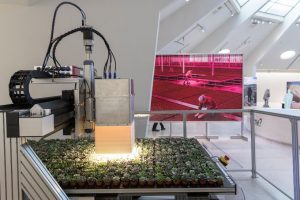
In 2012, Rem Koolhaas wrote an article entitled ‘Countryside’ which was the seed of his exhibition at the Guggenheim in New York, ‘Countryside, The Future’. An exhibition that opened two weeks prior to global lockdown and that forecasted or ‘put on the table’ some of the most relevant aspects of the change in outlook. A preview of the ‘end of the city as a modern object’ as an abstract place of innovation, above nature. A change in focus and vision.
The article presents the error in the architectural discipline, what he calls ‘prextext’, of focusing on the number of people who live in the city and those that left the countryside. In this question of symmetry or asymmetry, he asks, “What did the people who moved to the city leave behind?” Based on this question he plants, waters and helps to grow the different concepts on which this vision is based where “for the architectural discipline, the countryside today has become the terra incognita of 18th Century maps.” “The emptying of the countryside is having a more drastic impact than the intensification of the city. While the city is more and more itself, the countryside is transforming into something new: a new stage for genetic experimentation, industrialized nostalgia, new models of seasonal migration, significant subsidies, tax incentives, digital informants, flexible agriculture and species homogenization. It would be difficult to write such a radical inventory of the city. There are two billion people who live in the countryside who do not work in the primary sector and what they do for a living is unknown.
THE CITY OF THE FUTURE: VISIONS AND PROJECTS
The city of the future is being designed in real time, inspired by projects and policies like the New European Bauhaus. Vicene Guallart – Daniel Ibañez and the IAAC are designing different models, seeking to achieve the SDGs, fight against climate change, building scalable prototypes, integrating information and communication technologies, artificial intelligence and bioengineering.
The city of the future they propose is a symbiotic agreement, in balance with the countryside. It is a city that must behave like a forest, with buildings that function as trees, integrating an environmental infrastructure that comprehensively manages the urban metabolic diet.
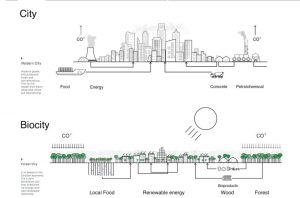
The city of the future will be an ecosystem where urban and rural areas coexist in harmony, promoting sustainable, healthy lifestyles. ‘Biocities’, ‘ecocities’ and ‘regenerative towns’ will incorporate environmental infrastructure, promoting resilient development and environmental civilizations.
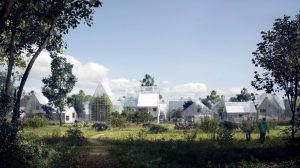
The modern city is at war, at a turning point. Google, Facebook and Microsoft, Elon Musk, Jeff Bezos and Kanye West also want to be our landlords, the owners and designers.
We need to reconceive, regenerate and redesign cities – not merely as a habitable space, but as a positive, healthy environment, symbiotic with the bioregion that surrounds us. How should cities adapt to climate change?
The urban future depends on our ability to integrate technological innovations along with the thermodynamic and metabolic needs, but above all, environmental needs – creating cities that nurture both their residents and the planet.
There are many proposals on a European level. The EIT Climate-KIC manages the NetZeroCities Pilot Cities Programme, which currently supports over 50 European cities aiming for climate neutrality by 2030.
The European Commission selected 100 cities to participate in a mission to be smart, climate neutral cities by 2030. Another ten cities were recognized for their plans and commitments to achieve climate neutrality. Models for new neighborhoods are emerging, whose objectives are to be positive and improve, rehabilitating the starting conditions and even this neutrality.
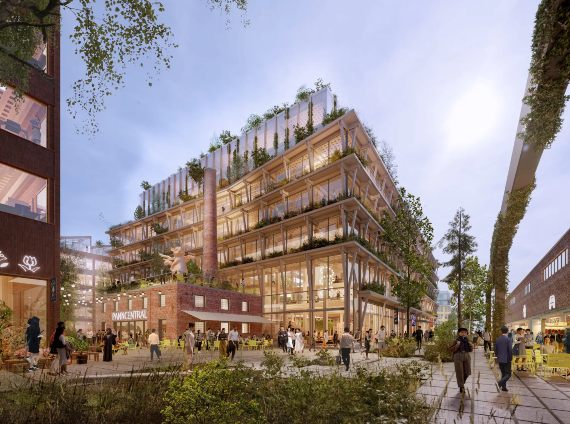
This city of the future should be accompanied by a new definition. We propose some terms for the Real Academia Española:
The city of the future as a network that conquers the Sustainable Development Goals through culture, through farming. Putting the essential needs and limits of the planet back in the center. The city relating the different forms of life and their spiritualities or visions seeking life in common and in symbiotic balance with the ecosystem and the Earth.
The city of the future is mediated and penetrated by climate. A temperate city, a temperature-controlled city. Our shape of city is the temperature. The digestion of the form of the city is temperature. Every encounter with the land, with food, with home, with the day, with life, is mediated by the climate, CO2, and our end, our city.
The city of the future must be a catalog of powers to act. The city that aspired to function as a global system of solutions connected to the ecosystem – the land, to develop life in symbiosis with it, made a reality. The city to build our menu or its diet and produce or cultivate a relational aesthetic, an ecosystemic fabric, an illustration of domestic networks.
The city of the future is a gradient, an atmosphere, a life manager. The city that exceeds the contour, its limit within the limit. The city that digests, that looks ahead and looks from nature at the city itself, at the countryside. The city that seeks to regenerate, the reconnection through recollection in the ecotone. The city that surpasses the peripheral border and the limit or opposite between the definition of city and countryside.
The city of the future as an ecosystem where the microcosms and the macrocosms meet in a continuum of cooperation between organisms.
The city of the future poses the need to develop new urban models that promote rehabilitation, autonomy and density in symbiosis with the land and the historical-cultural heritage of each bioregion. These models must attain the Sustainable Development Goals and most innovative regulatory frameworks, focusing on sovereignty and sustainability. The city of the future suggests the creation of laboratories of innovation and urban design that promote the production of sustainable food economies and the use of permaculture and artificial intelligence.
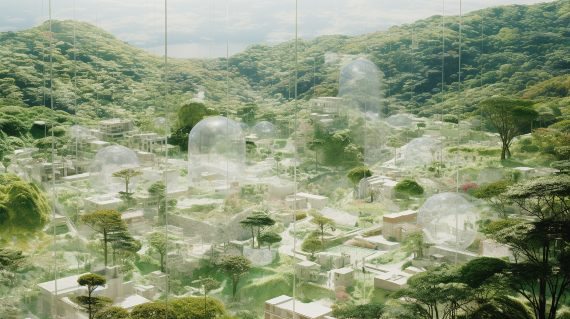
The city of the future as a resilient and regenerative metropolis that uses sustainable construction technologies and materials with a low environmental impact, integrating principles from the New European Bauhaus, in order to create urban spaces that adapt to climate change, promote the circular economy and improve the quality of life of its residents.
Jorge López Conde
Comments on this publication